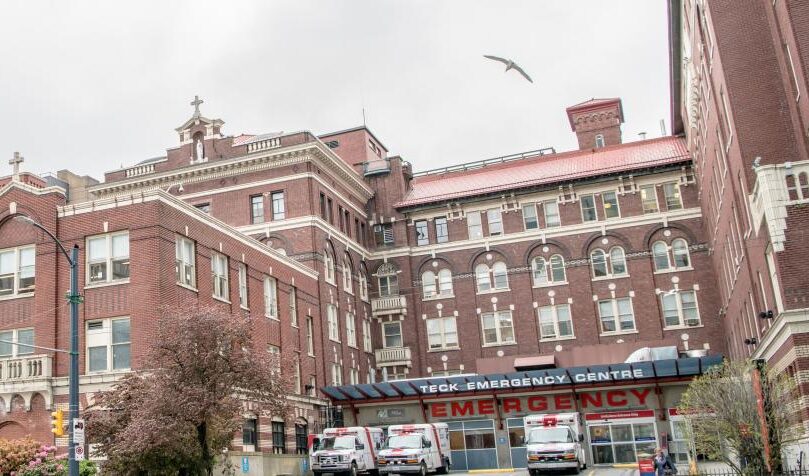In 2011, public health researchers in Vancouver began conducting interviews with people who use drugs and had either been discharged from an emergency department (ED) or left against medical advice (AMA). More than a decade in the making, the recently published findings are a stark picture of anti-Indigenous racism and systemic refusal to treat pain—and of how little has changed.
Between December 2011 and February 2013, 30 participants from the Vancouver Injection Drug Users and AIDS Care Cohort to Evaluate Exposure to Survival Services studies—both of which have been running in Vancouver’s Downtown Eastside (DTES) for over 20 years—gave interviews about their ED discharge experiences. But a painstaking academic approval process was compounded by the onset of the overdose crisis in British Columbia, then the pandemic, delaying completion and publication of the research until February 2023.
Canada’s universal health care coverage varies by province, but ED treatment and medication are intended to be available to everyone at no cost. Some of the ED admissions were related to drug use—like injection infections or withdrawal—but not all. Participants overwhelmingly reported being turned away for so-called “drug-seeking behavior,” or because of their Indigenous ethnicity.
“I need something. But because I live [in the] DTES, they don’t give me nothing except for, you know acetaminophen,” a 41-year-old Indigenous woman told interviewers.
Nearly all Indigenous participants reported being asked, or forced, to leave the ED.
Over half the study participants were Indigenous. Nearly all reported that they had been asked, or forced, to leave the ED.
“The most extreme examples that we heard about treatment in emergency departments were from our Indigenous participants,” senior author Dr. Ryan McNeil, director of harm reduction research at Yale University, told Filter. “They were the folks in our study who were more likely to be kicked out and escorted off the property by security. And I think that speaks to the hyper-surveillance of Indigenous folks in particular in care settings.”
ED do not formally distinguish between patients who are discharged and those who leave AMA, a line which is in any case often blurred.
“If you’re being treated so poorly, and not having your needs met, you’re kind of being forced out anyway,” McNeil said, “whether or not you’re escorted out by security.”
Anti-Indigenous discrimination, including verbal and physical abuse, is a well-documented crisis in BC health care. It “discourages me from coming to the hospital when I am sick,” a 29-year-old Indigenous woman told interviewers.
Little has changed to meaningfully improve Indigenous health care access in the province. Regional health authorities and the BC government have installed “reconciliation divisions,” where the Indigenous people hired to “facilitate cultural safety” report facing retaliation and hostility.
“What we heard [back then] is consistent with what we continue to hear,” McNeil said. “That emergency departments in hospitals are sites of social violence, where people are treated poorly and don’t have their needs met.”
Methadone prescriptions were a factor in why some patients were less likely to visit an ED.
One of the more substantive changes since then has been the addition of a nurse-led overdose prevention site in St. Paul’s hospital in 2021, after the peer-led program that had been operating in the hospital’s parking lot for several years relocated. Another change has been the creation of Addiction Medicine Consult (AMC) teams to manage care ED for patients who use drugs, though it’s not clear how many hospitals in the province employ such teams.
“To some extent [AMC teams] have improved the management of pain, and the use of medications like methadone,” McNeil said. “With that said, this continues to be an issue.”
Though previous research has found that people who use drugs in Canada are several times likelier to frequent ED than people who don’t, this appears to only be true of some drug users, not all. Methadone prescriptions were identified as a factor in why some drug users were less likely to visit the ED than others.
The few patients who reported comparatively good ED experiences had treated by staff who either prescribed medication for opioid use disorder, or who didn’t recognize symptoms of withdrawal and treated the patients’ pain because they viewed them as “really sick.”
“The entire conversation about ‘drug-seeking’ really overlooks the fact that [people] in withdrawal also do need drugs to manage those experiences,” McNeil said. “If we’re not providing them, then people are going to leave. And when they do, they’re going to be at much greater overdose risk.”
Photograph of St. Paul’s Hospital via Vancouver Coastal Health





Show Comments